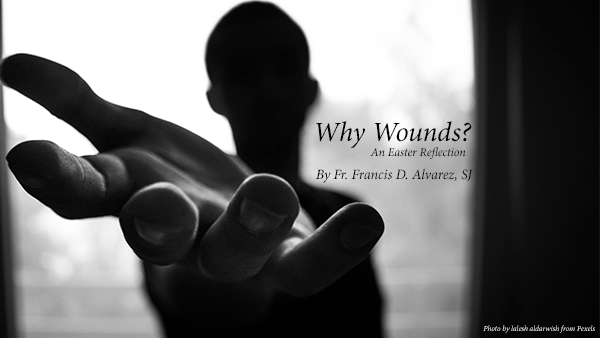


Fr. Francis D. Alvarez, SJ
April 28, 2019
Thomas, who was not with the other disciples when the Resurrected Christ appeared to them, set this as the condition that would convince him of the miracle that is Easter: “Unless I see the mark of the nails in his hands and put my finger into the nailmarks and put my hand into his side, I will not believe.”
If I were Thomas, I would neither demand to see nailmarks nor ask to put my hand on Jesus’ pierced side. Instead, I would say, “Unless I see Jesus feeding a multitude again or healing the sick as he did before, I will not believe.” Wouldn’t it be better to see Jesus as he was in his days of glory in Galilee? Why go back to memories of the cross and Calvary? Why did Thomas insist on wounds, and why did Jesus grant him this request?
Yes, the wounds would verify that the Risen Jesus was indeed the man who was crucified, but I think there is also something deeper going on here.
We cannot say that we are truly close to a person if all we know are his or her strengths. It is an invitation to intimacy when a person shares his or her weaknesses with us. Then that person has become vulnerable to us. Vulnerability – from the Latin word vulnus, which means wound – is a dangerous gift to give because it gives the recipient the ability to hurt us.
Jesus does not approach us only from a position of power. He opens himself to us, opens himself to being rejected by us, because to love is to open yourself to hurt. In showing his wounds, Jesus gives us proof of his love.
But Jesus showing us his wounds is also a sign of forgiveness. It is a way of telling us: “My love for you is deeper than these wounds.”
Jesus’ baring of his wounds after the Resurrection is also a proclamation: “There is something beyond wounds.” There is something better waiting for us if we can go beyond past hurts and pains.
Jesus invites Thomas, “Put your finger here and see my hands, and bring your hand and put it into my side….” Think about it: This opens Jesus up to more pain, to barely healed wounds bleeding again. But this is what Easter means. Easter is not the false hope of all pain ending, but the strange hope that makes us believe it is possible to try again and risk getting hurt again.
Can we answer Jesus’ call and enter not just his woundedness but our own woundedness and the woundedness of others as well? Can we embrace our weaknesses and the weaknesses of others in a way that can lead us to forgive? Can we see that though Easter does not take away pain, Easter does light the path to something beyond it? If we can take even the first tentative step towards saying yes to all these questions, then Easter has really come for us.